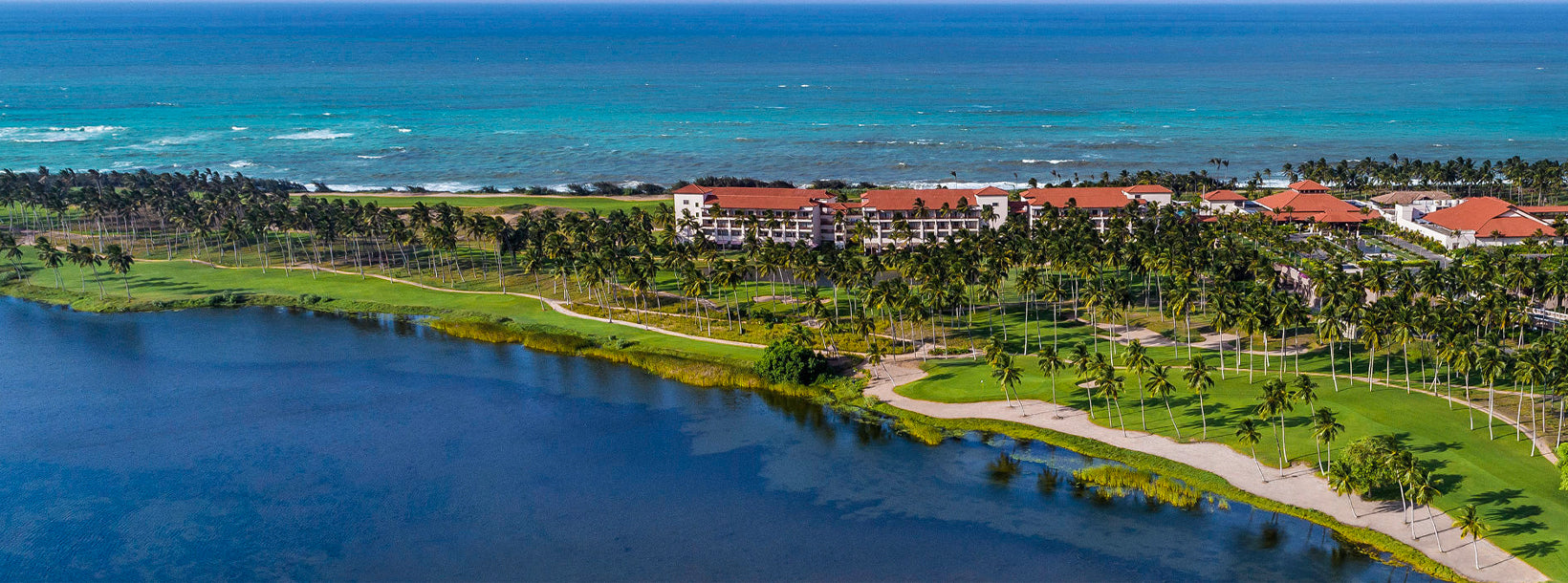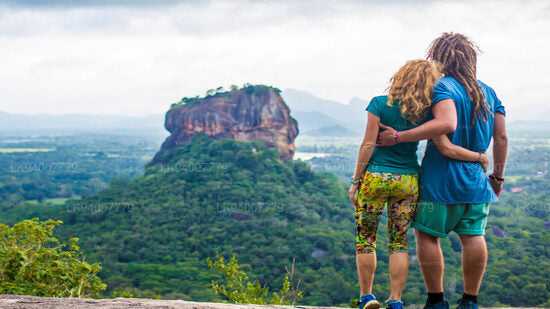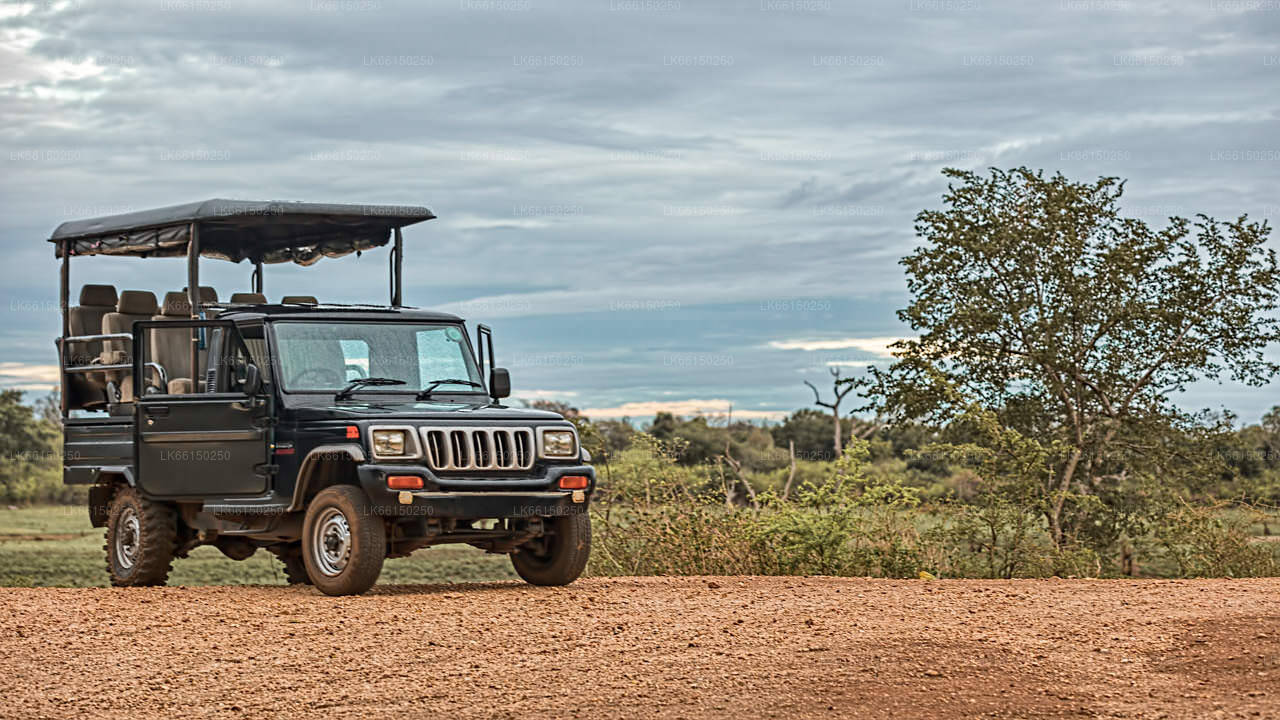
Ciudad de Hambantota
Hambantota, ciudad portuaria del sur de Sri Lanka, posee una importancia marítima estratégica. Conocida por su puerto de aguas profundas, desempeña un papel fundamental en las rutas comerciales mundiales, especialmente en el transbordo. La ciudad también cuenta con sectores industriales y turísticos emergentes, lo que contribuye a su desarrollo económico.
Ussangoda
Ussangoda National Park is a Sri Lankan national park and designated archaeological site, situated on the Colombo – Kataragama road near Ambalantota – Nonagama Junction in Hambantota District. It is located in the southern sea turtle breeding zones. Ussangoda is a patch of high ground by the sea and spreads over a significant area. Unlike the rest of the land surrounding, it is only covered with grass and a few pockets of pigmy forests. The summit of Ussangoda area pans like a plateau for a significant length
Geological and archaeological importance.Ussangoda is known for its unusual placement by soil structure, flora, and location. There are many folk stories related to this site which include different takes about the land. General belief is that it is a part of a meteor or a proximity to a meteor hit. The main rationale for this belief is the soils brick-like hard quality with a reddish colour which is unique to this patch of land. Some rocks and soil layers contain what some speculate to be remnants of an extreme heat (that can be caused by an event such as a meteor hit). It is also suspected that the soil has a high concentration of minerals/metals giving its unique colour. In several places, especially by the sea facing areas rocks and soil can be observed clearly having multiple layers usually with distinct colourization. It is however unclear whether these speculations have been tested in any proper scientific study at all. It can be also noticed that Ussangoda is located geographically closer to another archaeological site "Miniha Gal Kanda", where evidence for pre-historic human existence has been found.
The rock debris has high iron concentration. Magnets attract them
LegendThere are several legends related to the area. The site is considered a sacred/forbidden ground for general affairs in local lore. One popular belief is that Ussangoda is a ground of the local demi-god "Mangara". Other beliefs range from religiously rooted backgrounds to the unwritten/alternate history related to Ravana. According to Hindu puranas, Ussangoda was one of the landing strips of Ravana's Pushpaka vimana.
Ussangoda National ParkUssangoda National Park was created in 2010. The objectives of establishing the new national park are providing long term protection for the area's biological, archaeological and geographical values. The park borders the Kalametiya Wildlife Sanctuary in the east.
Acerca del Distrito de Hambantota
Hambantota es una ciudad rural en la zona costera sureste de Sri Lanka. Es también la capital del Distrito de Hambantota, en la Provincia Sur de Sri Lanka. A unos 240 km de Colombo, Hambantota se encuentra en plena transformación para convertirse en un puerto estratégico y centro comercial, con un amplio desarrollo de infraestructura. Rodeada de extensas playas de arena, Hambantota es una ubicación ideal para visitar los lugares de interés cercanos.
El Parque Nacional Bundala se encuentra a 20 km al este de Hambantota y el Santuario Weerawila un poco más lejos. El Parque Nacional Ruhuna y el Templo Kataragama son otros atractivos a los que se puede acceder fácilmente desde esta ciudad.
Acerca de la Provincia Sur
La Provincia Sur de Sri Lanka es una pequeña área geográfica compuesta por los distritos de Galle, Matara y Hambantota. La agricultura y la pesca de subsistencia son la principal fuente de ingresos para la gran mayoría de los habitantes de esta región.
Entre los lugares de interés de la Provincia Sur se encuentran los santuarios de vida silvestre de los Parques Nacionales de Yala y Udawalawe, la ciudad sagrada de Kataragama y las antiguas ciudades de Tissamaharama, Kirinda y Galle. (Aunque Galle es una ciudad antigua, prácticamente no se conserva nada anterior a la invasión portuguesa). Durante el período portugués, dos famosos poetas cingaleses, Andare, de Dickwella, y Gajaman Nona, de Denipitiya, en el distrito de Matara, compusieron poemas sobre la gente común.










